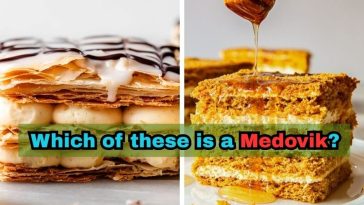The windowpane test assesses gluten strength by stretching a small piece of dough into a thin, translucent film without tearing. A strong gluten network traps gas and creates good bread structure. If the dough tears easily, it needs more kneading to develop elasticity and strength.Creaming butter and sugar traps air, giving cakes lift and lightness. Insufficient creaming results in dense cake texture because not enough air is incorporated to help leavening agents work effectively. Proper creaming is crucial for achieving the desired crumb and volume in many cake recipes.Bloom measures gelatin’s gelling power. Higher bloom numbers indicate firmer gels. Bakers select gelatin with appropriate bloom for specific uses, like mousses or gummy candies. Bloom also refers to hydrating gelatin in cold liquid before heating, ensuring it dissolves smoothly and produces a uniform texture.Cake flour has around 7-9% protein, significantly lower than bread flour or all-purpose. Less protein means less gluten formation, resulting in softer, tender baked goods like cakes. It’s often bleached, which weakens gluten bonds and helps absorb liquids, producing a fine, delicate crumb.Autolyse involves mixing flour and water and resting it before adding salt and yeast. This period allows enzymes to begin gluten development and starch breakdown. The dough becomes easier to knead, gains extensibility, and improves flavor and crumb. It’s popular in artisan bread-making.Over-whipping cheesecake batter introduces air bubbles that expand and contract during baking, causing surface cracks. Baking at high temperatures also contributes. To prevent cracks, mix gently, use a water bath for even heat, and cool the cheesecake gradually inside the turned-off oven.Frangipane is a creamy mixture of butter, sugar, eggs, and ground almonds used as a pastry filling in tarts and galettes. It becomes light and fluffy when baked, adding nutty richness and moisture. It’s a classic component of French pastries like Bakewell tarts or galettes.Vinegar’s acidity weakens gluten strands, helping keep pie crust tender and flaky. Gluten makes dough elastic, but excess gluten leads to toughness. A splash of vinegar controls gluten formation while not affecting taste significantly. Many bakers rely on vinegar for perfectly crisp, tender crusts.“Lock-in” is the step in laminated dough where a sheet of butter is encased inside the dough before rolling and folding. This creates alternating layers of butter and dough, producing the flaky texture of croissants, puff pastry, and Danish pastries. Precise technique prevents butter leakage.Proofing allows yeast dough to rest and rise as yeast ferments sugars, releasing carbon dioxide. This gas stretches gluten networks, creating volume and a soft crumb. Under-proofed dough bakes dense, while over-proofed dough collapses. Proofing times depend on yeast quantity, room temperature, and recipe.Dutch-process cocoa is treated with an alkaline solution to neutralize acidity. This results in a smoother, less bitter flavor and a darker color. Because it’s less acidic, it doesn’t react with baking soda for leavening. Recipes specify Dutch-process or natural cocoa to maintain balance.Tunneling appears as holes running through muffins or cakes, caused by over-mixing batter, which over-develops gluten. This creates elastic strands that trap steam and expand, forming tunnels. Proper technique involves mixing only until ingredients are combined, ensuring tender crumb without rubbery, chewy textures.Cornstarch lowers protein content in cake flour, softening gluten formation and producing tender textures. It absorbs liquid without developing gluten strands, which helps achieve light cakes. Many DIY cake flour recipes combine all-purpose flour with cornstarch to mimic the soft, fine crumb of commercial cake flour.Par-baking partially bakes a crust before adding moist fillings. This prevents soggy bottoms and ensures crisp texture. Common in quiches, custard pies, and fruit tarts, par-baking uses weights to keep crust flat. It’s crucial for baked goods requiring long filling bake times without overcooking crust.Brown sugar contains molasses, adding moisture and acidity. Its hygroscopic nature absorbs liquid, creating thicker doughs that spread less during baking. Additionally, acidity strengthens gluten bonds slightly, contributing to cookies that hold shape. It also adds chewiness and caramel-like flavor to baked treats.Pâte à choux is a unique dough cooked first on the stove, then baked to create hollow pastry shells. It’s the base for cream puffs, éclairs, profiteroles, and gougères. Steam inside the dough expands, puffing it up into airy structures ready for sweet or savory fillings.Chilling solidifies fats in cookie dough, preventing excessive spreading during baking. It also allows flour to fully hydrate, improving texture and flavor. The result is thicker cookies with better shape and concentrated taste. Many recipes recommend chilling dough for at least 30 minutes or overnight.Acids like vinegar or cream of tartar stabilize egg whites by lowering their pH, tightening protein bonds, and helping foam maintain volume. Stable whipped whites are crucial for meringues, soufflés, and angel food cake. Without acid, egg whites are more prone to collapsing during mixing.Swiss meringue buttercream starts by gently heating egg whites and sugar over a bain-marie, then whipping into a glossy meringue before adding butter. It’s smoother and less sweet than traditional buttercream, with a silky texture perfect for cake frosting. Temperature control is key for success.A crumb coat is a thin frosting layer applied to seal stray crumbs before the final smooth layer of icing. It prevents crumbs from appearing in finished decoration. Chilling the cake after the crumb coat helps set it, ensuring a clean, professional-looking surface for decorating.Docking involves poking small holes in pie or tart dough before baking to allow steam to escape. Without docking, steam can puff crusts, creating uneven bubbles. Docking helps ensure flat, evenly baked pastry bases for blind-baked crusts in quiches, tarts, or custard pies.Pâte sucrée is a sweet, tender pastry dough used for tarts and desserts. Unlike standard pie dough, it includes sugar and sometimes egg yolk, creating a crisp, cookie-like texture. It’s less prone to shrinking, making it perfect for delicate fruit tarts or custard-filled shells.Steam keeps a dough’s surface moist during the initial baking stage, allowing the bread to expand fully before the crust sets. It also contributes to a thin, shiny crust and enhances caramelization for a glossy finish. Many artisan loaves rely on steam for perfect crusts.Butter contains roughly 80-82% fat and 16-18% water, whereas shortening and lard are nearly 100% fat. The water content in butter creates steam during baking, contributing to flakiness in pastries. However, it also affects dough hydration and must be factored into recipes for proper texture.Scalding milk (heating it to near boiling) denatures whey proteins and inactivates enzymes that can weaken gluten and inhibit yeast. This helps ensure better dough structure and volume. While modern milk processing makes it less essential, some bakers still scald milk for improved bread texture.Oven spring is the rapid expansion bread dough undergoes during the first few minutes of baking as trapped gases expand and yeast activity peaks before dying off from heat. Good oven spring contributes to an open crumb structure and attractive shape in baked loaves.A sponge in baking is a pre-ferment mixture of flour, water, and yeast left to ferment before adding remaining ingredients. This technique develops flavor, improves gluten strength, and extends shelf life. It’s common in bread baking, contributing complexity and airy structure to finished loaves.Tempering chocolate means melting and cooling it to precise temperatures to control cocoa butter crystallization. Proper tempering ensures chocolate sets with a glossy finish and crisp snap, resisting bloom (white streaks). Tempering is crucial for chocolate candies, dipped fruits, and professional decorations.Pâte brisée is a French savory pastry dough used for tarts and quiches. It’s tender and flaky due to high fat content but contains no sugar, making it suitable for savory fillings. It’s the go-to crust for classic dishes like quiche Lorraine or vegetable galettes.Cornstarch thickens fruit pie fillings by gelatinizing when heated with liquid. It helps prevent watery, runny pies, ensuring clean slices. Unlike flour, cornstarch produces a clearer filling with a smooth texture. Proper measurement is key because excessive cornstarch can create a gluey or starchy taste.Retarding involves refrigerating dough to slow yeast activity and allow flavors to develop over time. Extended fermentation improves gluten structure, taste complexity, and bread texture. Artisan bakers often retard dough overnight for superior crust, chew, and aroma. Temperature control is crucial to avoid over-proofing.Blooming cocoa means mixing cocoa powder with hot liquid or fat before adding it to a recipe. This process dissolves cocoa solids and intensifies chocolate flavor and color. Blooming prevents dry clumps and results in smoother batters for cakes, brownies, and frostings with rich chocolate taste.Egg wash, a mixture of beaten egg (sometimes with water or milk), gives pastries a golden color and glossy finish during baking. It also helps toppings like seeds stick and can seal edges in pie crusts. Overuse can cause pooling, so it’s applied lightly with a brush.A bain-marie involves placing a baking dish in a larger pan filled with hot water to ensure gentle, even heat. It prevents delicate desserts like cheesecakes or custards from cracking or curdling. The technique creates a smooth, creamy texture by avoiding direct oven heat.Over-kneading bread dough overdevelops gluten, making it tight and elastic. This reduces dough extensibility, leading to poor rise and a dense, dry crumb. While some kneading is necessary for structure, excessive kneading damages texture. Proper mixing time varies based on flour type and hydration levels.Buttercream curdles when butter and meringue are different temperatures. Cold butter solidifies in warm meringue, forming lumps that appear curdled. The fix is continued mixing until the mixture emulsifies or gently warming the bowl. Consistent ingredient temperatures prevent this common frosting problem.Traditional puff pastry relies on layers of butter rolled between sheets of dough. Butter’s high melting point and water content create steam during baking, which lifts and separates layers for the signature flaky texture. Precise technique ensures butter stays cold and doesn’t melt out prematurely.Streusel topping combines butter, sugar, and flour, sometimes with spices or nuts, into a crumbly mixture. Sprinkled on muffins, coffee cakes, or pies, it adds sweet, crunchy texture and visual appeal. The butter melts and crisps during baking, creating a delicious contrast to soft interiors.Powdered sugar often clumps due to humidity or compression. Sifting removes lumps for smoother icing, ensuring no gritty texture. It’s especially important for glazes, buttercream, and royal icing, where lumps can spoil appearance. Sifting also makes measuring more accurate and consistent in delicate recipes.A Dutch oven’s thick walls and tight lid trap steam during baking, mimicking a professional steam oven. This environment promotes oven spring and creates a crisp, shiny crust on artisan loaves. It’s perfect for no-knead bread recipes, sourdough, and rustic boules baked at high temperatures.You scored 0 out of 40You scored 1 out of 40You scored 2 out of 40You scored 3 out of 40You scored 4 out of 40You scored 5 out of 40You scored 6 out of 40You scored 7 out of 40You scored 8 out of 40You scored 9 out of 40You scored 10 out of 40You scored 11 out of 40You scored 12 out of 40You scored 13 out of 40You scored 14 out of 40You scored 15 out of 40You scored 16 out of 40You scored 17 out of 40You scored 18 out of 40You scored 19 out of 40You scored 20 out of 40You scored 21 out of 40You scored 22 out of 40You scored 23 out of 40You scored 24 out of 40You scored 25 out of 40You scored 26 out of 40You scored 27 out of 40You scored 28 out of 40You scored 29 out of 40You scored 30 out of 40You scored 31 out of 40You scored 32 out of 40You scored 33 out of 40You scored 34 out of 40You scored 35 out of 40You scored 36 out of 40You scored 37 out of 40You scored 38 out of 40You scored 39 out of 40You scored 40 out of 40
Start Quiz
NextNext QuizIncorrectCorrectGenerating your resultRetryOops, Quizday rookie! Don't worry, even the greatest quiz masters had to start somewhere. You may have stumbled this time, but every mistake is an opportunity to learn and grow. Keep on quizzing, Quizday newbie, and let your thirst for knowledge guide you towards greatness!Hooray for trying, Quizday explorer! You may not have aced the quiz this time, but you're like a brave adventurer trekking through uncharted territories. Keep exploring, Quizday fan, and let your inquisitive spirit be your guide to the riches of knowledge. Who knows what wonders await you on your next quiz quest?Great effort, Quizday adventurer! You're like a curious cat exploring the world of trivia with wide-eyed wonder. Keep on quizzing, Quizday fan, and let your enthusiasm for knowledge propel you towards success. Remember, even the most experienced quiz champions started somewhere. You're on your way to greatness!Hooray for taking the Quizday challenge! You may not have hit the jackpot this time, but you're like a daring adventurer navigating through the treacherous terrain of trivia. Keep exploring, Quizday fan, and let your quest for knowledge guide you towards greatness. Who knows what treasures await you on your next quiz adventure?Great effort, Quizday adventurer! You're like a brave warrior fighting through the tough battles of trivia. Keep on quizzing, Quizday fan, and let your thirst for knowledge be your shield and sword. Every question is a chance to learn and grow, and you're on your way to becoming a trivia champion!Way to go, Quizday explorer! You're like a brave adventurer venturing into the unknown territories of trivia. Keep on quizzing, Quizday fan, and let your love for learning guide you towards success. Remember, every answer brings you one step closer to becoming a true quiz master. You're doing great!Congratulations, Quizday adventurer! You're like a skilled navigator sailing the choppy waters of trivia. Keep on quizzing, Quizday fan, and let your determination to learn guide you towards victory. Remember, every answer is a chance to expand your knowledge and hone your skills. You're on your way to becoming a true quiz addict!Great job, Quizday explorer! You're like a seasoned adventurer making steady progress through the challenging landscape of trivia. Keep on quizzing, Quizday fan, and let your passion for learning fuel your journey towards success. Remember, every question is an opportunity to grow and improve. You're on your way to becoming a true quiz addict!Awesome job, Quizday adventurer! You're like a skilled explorer braving the tricky terrain of trivia. Keep on quizzing, Quizday fan, and let your passion for knowledge propel you towards victory. Remember, every question is a chance to learn and grow. You're on the right track to becoming a true quiz addict!Congratulations, Quizday master! You're like a skilled quiz ninja slicing through the challenges of trivia. Keep on quizzing, Quizday fan, and let your love for learning guide you towards success. Remember, every answer is a step towards becoming a true quiz addict. You're doing great!High five, Quizday champion! You're like a quiz wizard casting spells of knowledge and enlightenment. Keep on quizzing, Quizday fan, and let your love for trivia lead you towards victory. Remember, every answer is a chance to expand your mind and sharpen your skills. You're well on your way to becoming a true quiz addict!Way to go, Quizday guru! You're like a quiz machine, churning out correct answers with ease. Keep on quizzing, Quizday fan, and let your passion for trivia guide you towards greatness. Remember, every question is an opportunity to showcase your skills and love for learning. You're well on your way to becoming a true quiz addict!Congratulations on being a true Quizday! You've proved that you're addicted to quizzes and have what it takes to be a top scorer on our site. Keep up the great work and keep testing your knowledge with Quizday - the ultimate entertainment quiz destination. We can't wait to see what you'll achieve next!Cheers to you, valiant Quizday knight! Your quest for knowledge is like a noble warrior on an epic journey through the realms of wisdom. As you continue to vanquish the challenges of trivia, your intellectual armor will gleam ever brighter, inspiring awe in all who bear witness. Forge onward, champion!You're a true Quizday superstar! Your addiction to quizzes has paid off, and you've shown that you're a force to be reckoned with on our site. Keep up the great work and keep testing your knowledge with Quizday - the ultimate entertainment quiz destination. We can't wait to see what you'll achieve next!Great job, Quizday enthusiast! You're crushing the quizzes like a champion weightlifter lifting heavy weights. Your mental agility and impressive knowledge have impressed us like a magician pulling a rabbit out of a hat. Keep quizzing, Quizday fan, and let your intellect shine like a beacon of brilliance!Way to go, awesome Quizday addict! You've proved yourself a true quiz champion like a superhero saving the day. Your boundless knowledge and quick reflexes have dazzled us like fireworks on a summer night. Keep on quizzing, Quizday fan, and let your intellect shine like a bright light for all to see!Hooray, fantastic Quizday fan! You've shown your mastery of our quizzes like a skilled magician performing a magic trick. Your intellect sparkles like a shining star in the Quizday galaxy, and we can't wait to see where your brilliance takes you next. Keep quizzing like a champ!Oh my, phenomenal Quizday quizzer! You've stunned us all with your incredible smarts and lightning-fast reflexes. Your triumphs on our trivia challenges make us want to shout "Eureka!" and dance a jig! Keep dazzling us with your intellect and let Quizday be your playground of wisdom. You're a trivia marvel!Wow, amazing Quizday whiz! You've zipped through our trivia like a speedy kangaroo on a mission. Your smarts light up Quizday like a dazzling firework show! Keep hopping from one quiz to another, spreading your cleverness and inspiring us all with your know-how. You're a true trivia superstar!您的得分為 $score(共 $count 分)Vous avez obtenu un score de $score sur $countSie haben $score von $count Punkten erreichtHai ottenuto $score su $countあなたは $score 点を獲得しました($count 点満点)당신은 $score점을 얻었습니다($count점 만점)Has obtenido $score de $countVocê obteve $score de $count pontosWhat is the “windowpane test” used to check in bread dough?
Baking is more than just mixing flour, sugar, and eggs—it’s a delicious blend of science, creativity, and a sprinkle of magic. Whether you’re mastering fluffy cakes, perfectly crisp cookies, or that elusive loaf of crusty bread, each recipe holds secrets waiting to be uncovered. From essential techniques like creaming butter to knowing the difference between baking soda and baking powder, the world of baking is full of fascinating details that can turn a simple treat into a showstopper. Ready to test your knowledge and learn some tasty tidbits along the way? Let’s see how well you know your way around the oven!
Congrats, you finished! Here is your result
Baking is more than just mixing flour, sugar, and eggs—it’s a delicious blend of science, creativity, and a sprinkle of magic. Whether you’re mastering fluffy cakes, perfectly crisp cookies, or that elusive loaf of crusty bread, each recipe holds secrets waiting to be uncovered. From essential techniques like creaming butter to knowing the difference between baking soda and baking powder, the world of baking is full of fascinating details that can turn a simple treat into a showstopper. Ready to test your knowledge and learn some tasty tidbits along the way? Let’s see how well you know your way around the oven!











